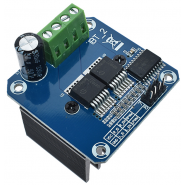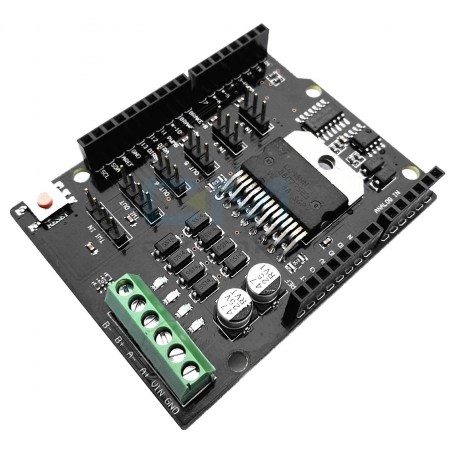
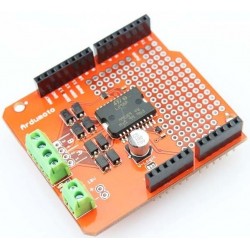
Shield - Ardumoto
- DESCONTINUADO
- Em promoção!




Este shield para Motores é baseado no circuito integrado L298N.
Pode acionar dois motores DC 2A separados ou 1 motor de passo 2A.
A velocidade e as direções do motor podem ser controladas separadamente.
Os pinos de controlo para os respectivos canais A e B são:
DESCRIÇÃO EM PORTUGUÊS BREVEMENTE DISPONÍVEL
Se tiver alguma dúvida neste produto não hesite em contactar-nos.
*Atenção: as imagens são meramente ilustrativas.
This Motor Shield is based on the L298N, which is a dual full-bridge driver designed to drive inductive loads such as relays, solenoids, DC and stepping motors. It lets you drive two DC motors with your arduino board, controlling the speed and direction of each one independently. You can also measure the motor current absorption of each motor, among other features.
The Motor Shield must be powered only by an external power supply. Because the L298N IC mounted on the shield has two separate power connections, one for the logic and one for the motor supply driver. The required motor current often exceeds the maximum USB current rating.
External (non-USB) power can come either from an AC-to-DC adapter (wall-wart) or battery. The adapter can be connected by plugging a 2.1mm center-positive plug into the for arduino 's board power jack on which the motor shield is mounted or by connecting the wires that lead the power supply to the Vin and GND screw terminals, taking care to respect the polarities.
To avoid possible damage to the for arduino board on which the shield is mounted, we reccomend using an external power supply that provides a voltage between 7 and 12V. If your motor require more than 9V we recommend that you separate the power lines of the shield and the for arduino board on which the shield is mounted. This is possible by cutting the "Vin Connect" jumper placed on the back side of the shield. The absolute limit for the Vin at the screw terminals is 18V.
The shield can supply 2 amperes per channel, for a total of 4 amperes maximum.
This shield has two separate channels, called A and B, that each use 4 of the for arduino pins to drive or sense the motor. In total there are 8 pins in use on this shield. You can use each channel separately to drive two DC motors or combine them to drive one bipolar stepper motor. The shield's pins, divided by channel are shown in the table below:
If you don't need the Brake and the Current Sensing and you also need more pins for your application you can disable this features by cutting the respective jumpers on the back side of the shield.
Brushed DC motor. You can drive two Brushed DC motors by connecting the two wires of each one in the (+) and (-) screw terminals for each channel A and B. In this way you can control its direction by setting HIGH or LOW the DIR A and DIR B pins, you can control the speed by varying the PWM A and PWM B duty cycle values. The Brake A and Brake B pins, if set HIGH, will effectively brake the DC motors rather than let them slow down by cutting the power. You can measure the current going through the DC motor by reading the SNS0 and SNS1 pins. On each channel will be a voltage proportional to the measured current, which can be read as a normal analog input, through the function analogRead() on the analog input A0 and A1. For your convenience it is calibrated to be 3.3V when the channel is delivering its maximum possible current, that is 2A.
Produtos Associados

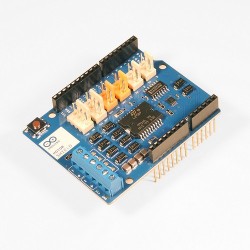
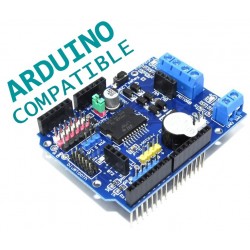
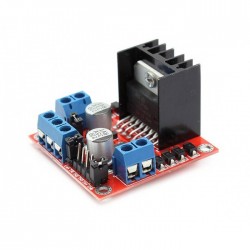

Este shield para Motores é baseado no circuito integrado L298N.
Pode acionar dois motores DC 2A separados ou 1 motor de passo 2A.
A velocidade e as direções do motor podem ser controladas separadamente.
Os pinos de controlo para os respectivos canais A e B são:

